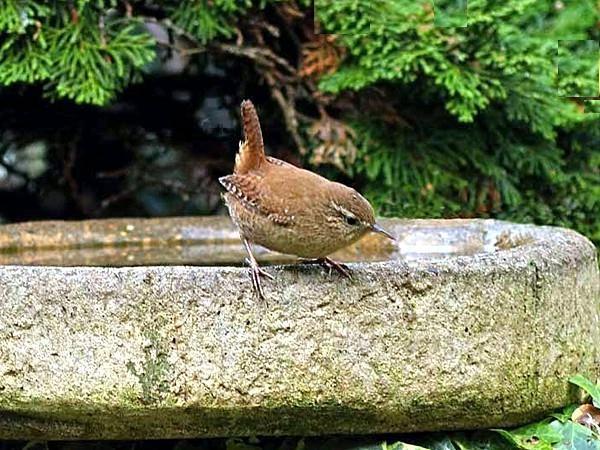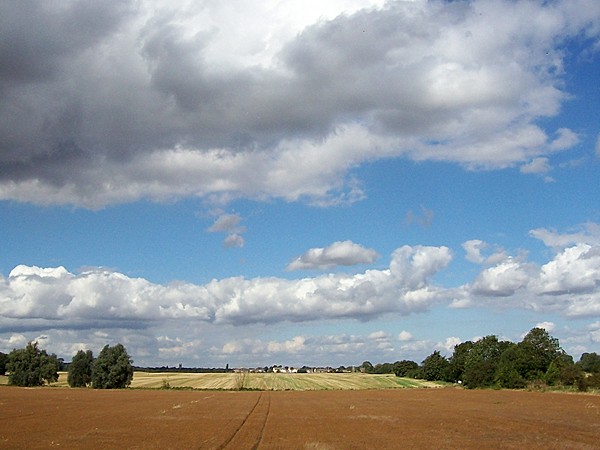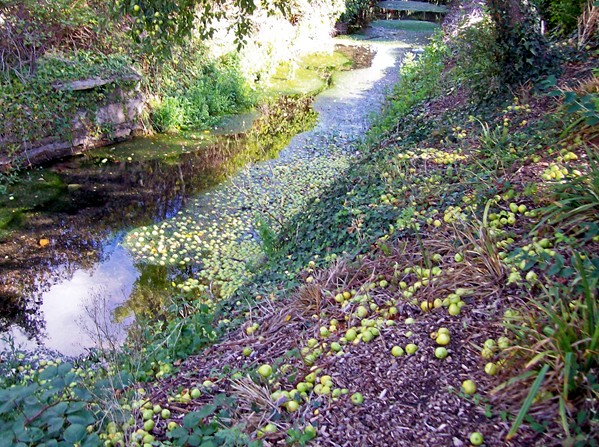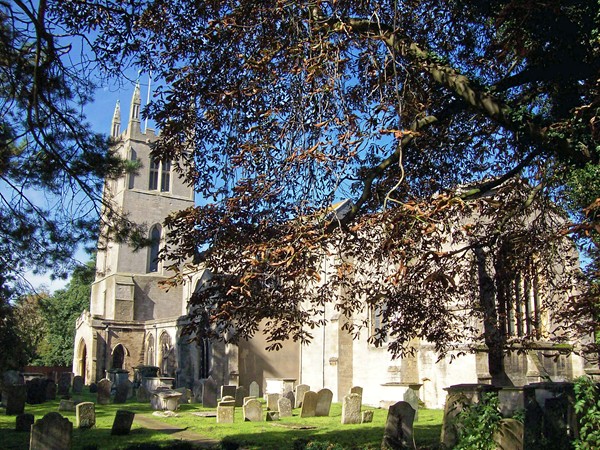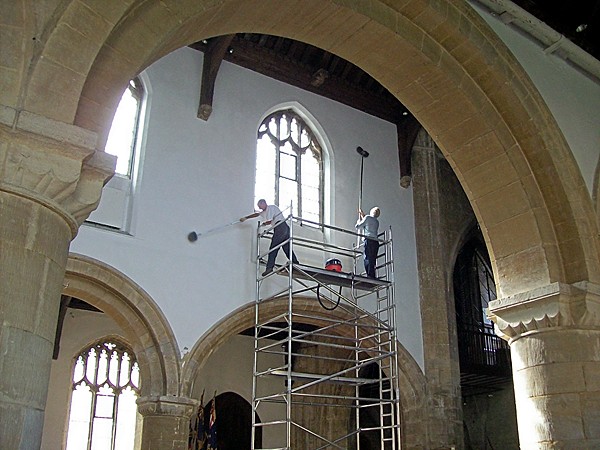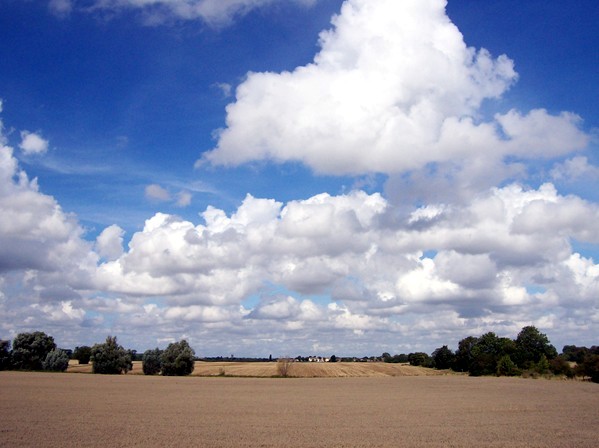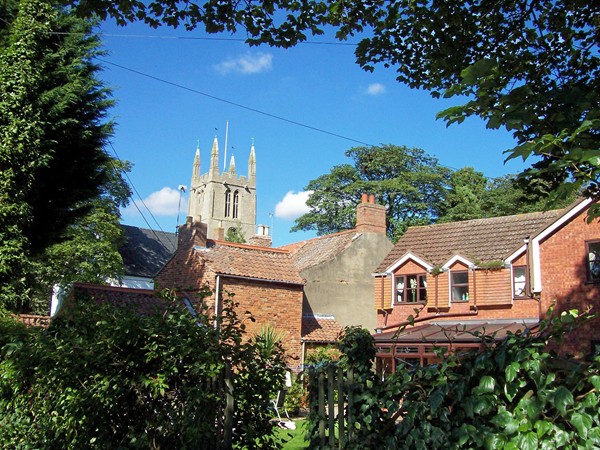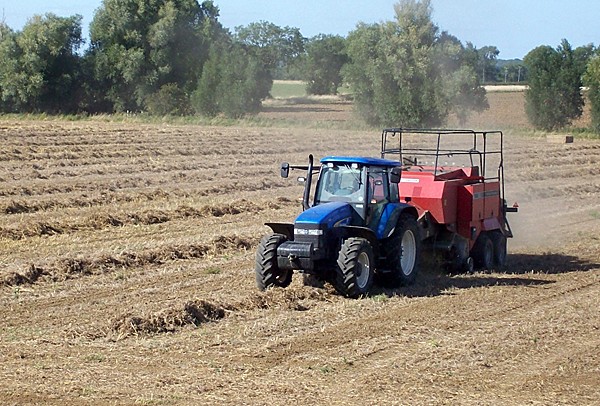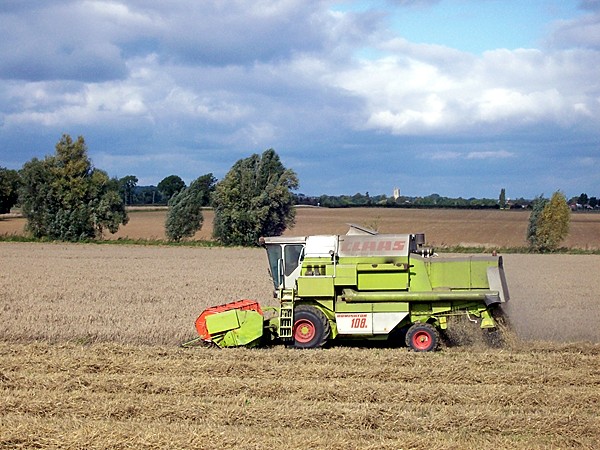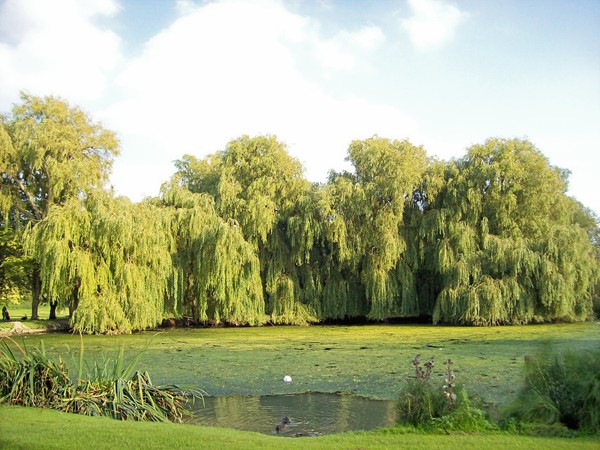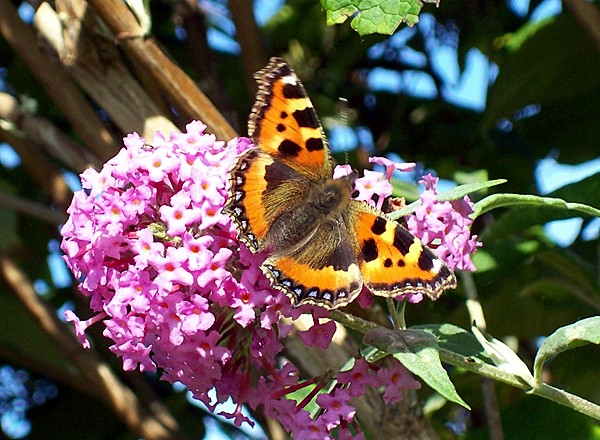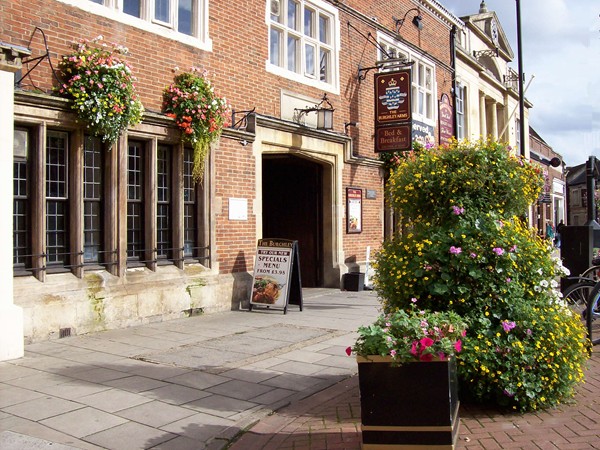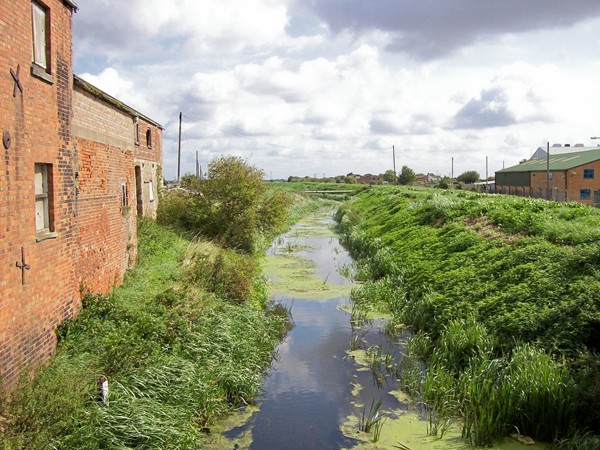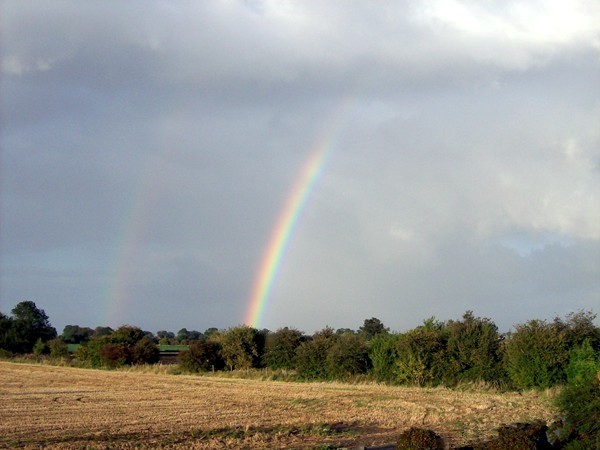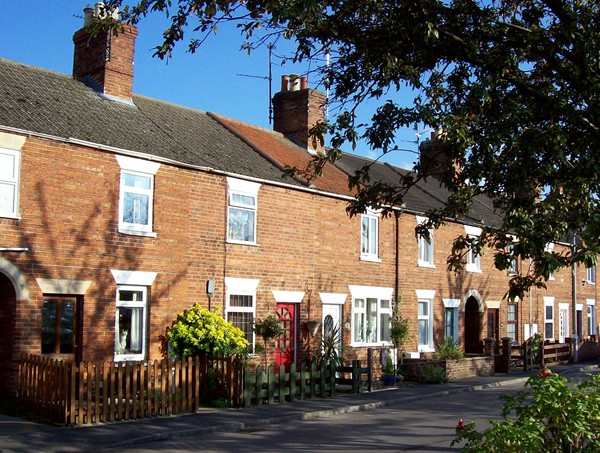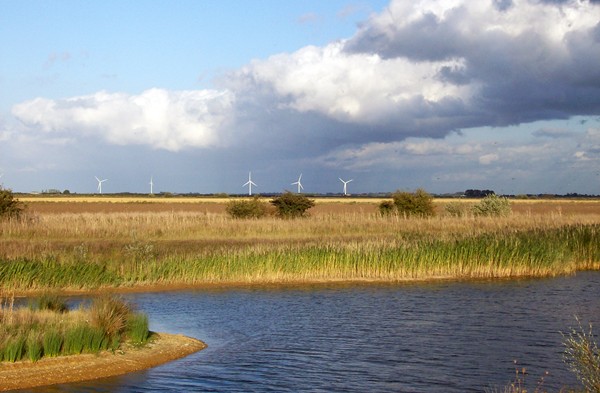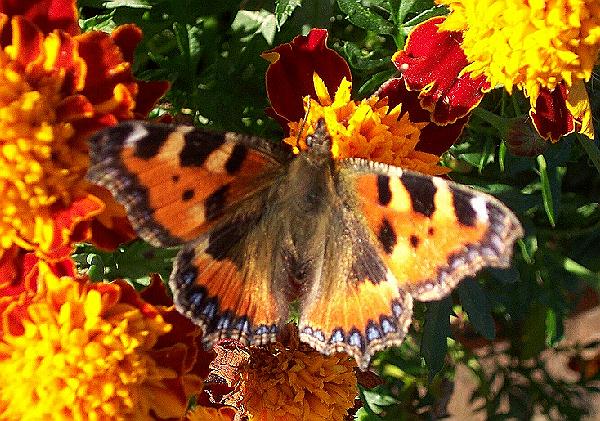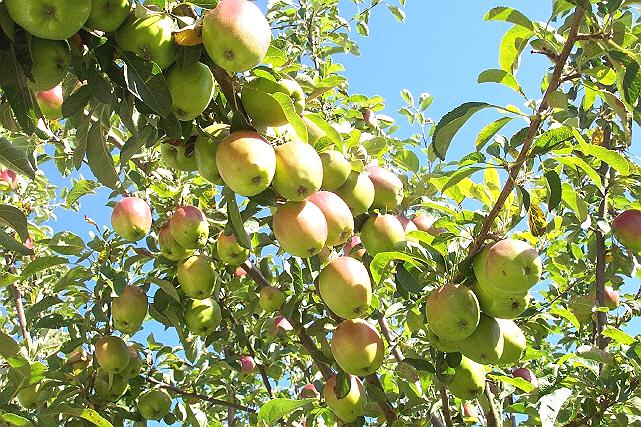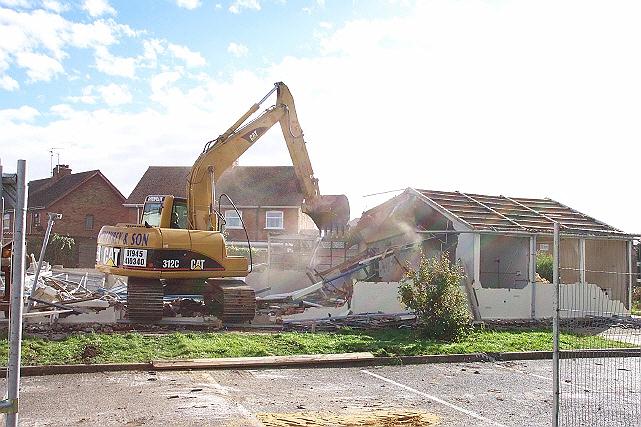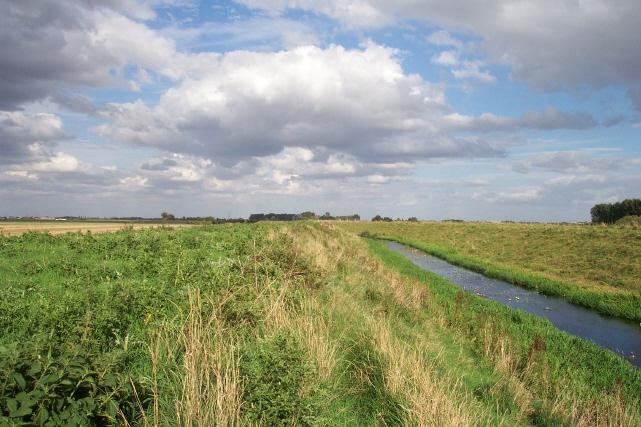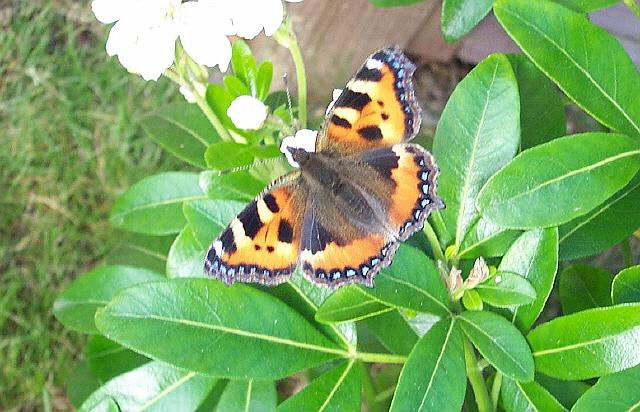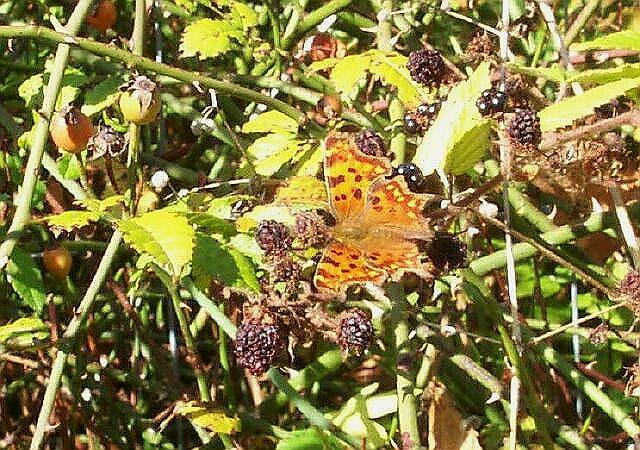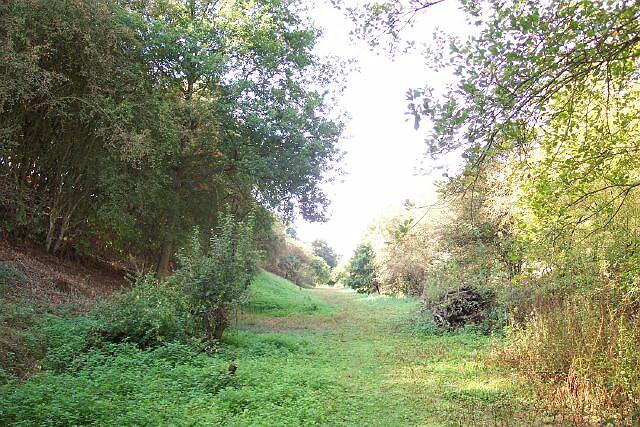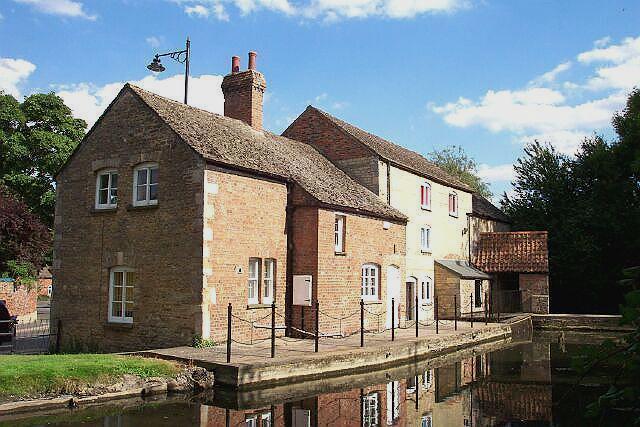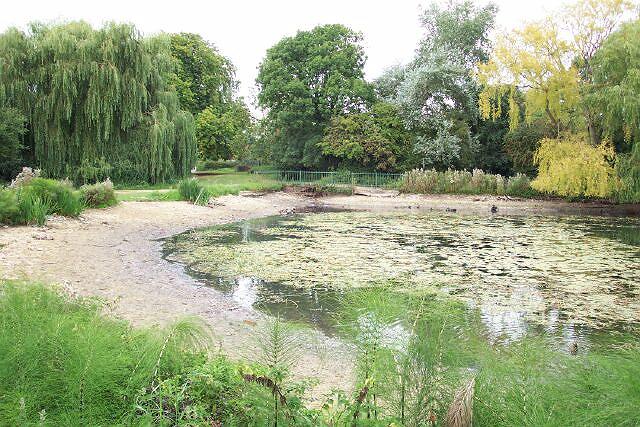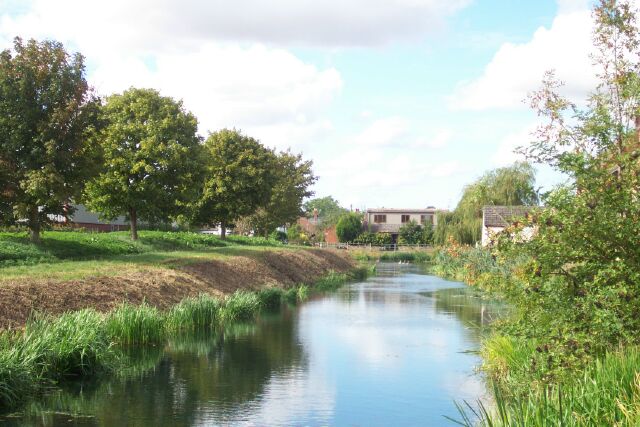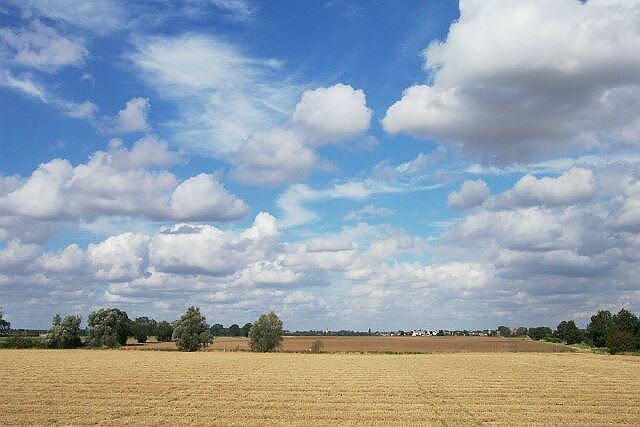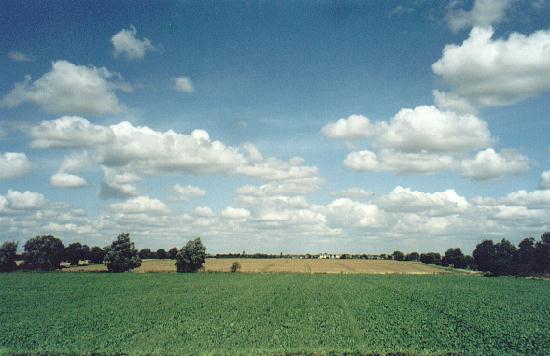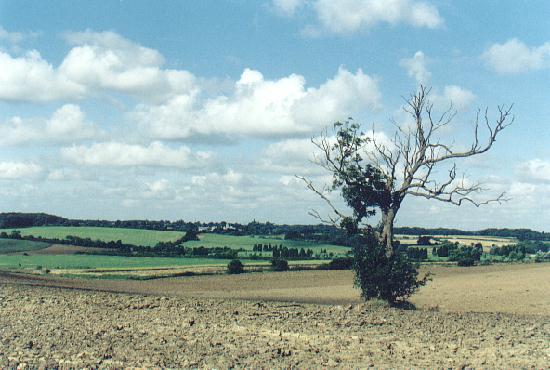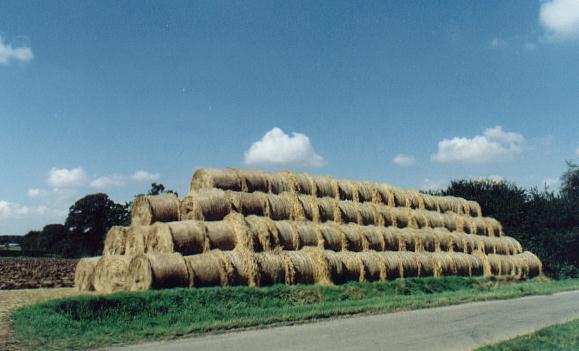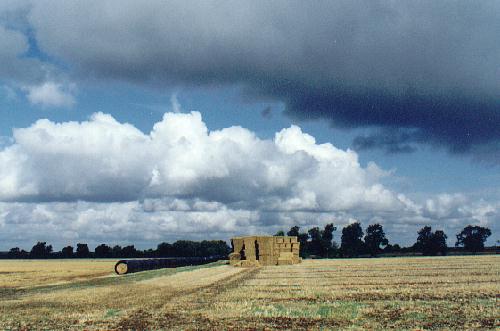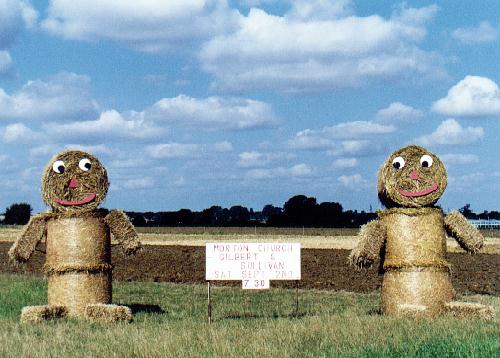|
September
Sunday 26th September 2014: Among the more elusive of our garden birds is the wren (Troglodytes troglodytes), the second smallest of our native species but has long been a national favourite with its piercing, trilling song, perky stance and cocked up tail. Affectionately known as Jenny Wren, a name derived from Victorian tales of a courtship with Cock Robin, it is difficult to believe that it was once the subject of a cruel ritual every St Stephen’s Day on December 26th when bands of youths dressed in motley would beat the hedgerows killing any wren they saw, a custom that dated back to the Bronze Age but now thankfully defunct and they are a welcome sight in our gardens where regular supplies of food and water will bring their reward, such as here in Prince’s Court where Geoff Bell took this delightful shot.
Tuesday 11th September 2012: The wide horizons in the fens produce some of the most attractive skyscapes in the country, especially in changeable weather such as this when the countryside is bathed in sunshine but the sudden appearance of dark clouds threaten rain. This was taken on the northern outskirts of Bourne, with the cottages of Dyke village ahead and the 14th century tower of Morton village church standing sentinel on the skyline while the fields illustrate the changing seasons, one covered in stubble after the wheat harvest and the other a crop of linseed awaiting the combine.
Monday 19th September 2011: There was once an orchard on the land just beyond the river behind the Bourne Institute in West Street containing a variety of apple, plum and damson trees but most of them have gone and the land now forms part of the Wellhead Gardens. There are one or two apple trees left and although children occasionally turn up to shake the fruit from the branches with sticks and stones, most years it goes to waste, falling into the water or to the ground where the apples are pecked by the birds or left to rot.
Thursday 30th September 2010: Nowhere is the passing of the year more evident than in the churchyard at Bourne where the ancient chestnut trees are indicators of the changing seasons, now beginning to shed their leaves in readiness for the winter ahead while the mellow stone of the 12th century Abbey Church looks its best in the bright midday sunshine. Autumn is now with us and in the weeks ahead, the graves of those who have gone before will soon be surrounded by a carpet of brown, gold and yellow while those who lie below remain oblivious of the galaxy of russet shades that adorn their last resting place.
Wednesday 15th September 2010: Our parish church of St Peter and St Paul is invariably clean and tidy, an appearance which is entirely due to the untiring efforts of a dedicated band of workers who are always ready to lend a hand whenever a job needs to be done. This week, it has been the turn of the walls and windows high up in the nave which have been cleaned by Doug Fownes, aged 69, and churchwarden Douglas Guppy, aged 70, a precarious task that needs a head for heights but both men proved that age is no barrier to working on scaffolding twenty feet up.
Tuesday 7th September 2010: Changeable weather has delayed the corn harvest and many fields of ripened wheat still await the combine while long periods of dry weather followed by continual rain have affected the quality of the grain, forcing up wholesale prices. Here to the north of Bourne, the distant field towards Dyke village was cut a week ago during a break in the weather with the farmer working late into the night by headlights but the other crop is still to be gathered in as growers throughout the country count the cost of a disastrous year.
Thursday 2nd September: Afternoon sunshine highlights the building materials used throughout Bourne in recent centuries, old and new red brick for ancient cottages and modern houses and the grey stonework of the Abbey Church beyond, all caught in a green framework of trees and shrubbery in the lane off South Street leading to the Red Hall in late summer.
Wednesday 9th September 2009: A baler has been busy for most of the day collecting the pea vine left over from the harvest in the 50-acre field outside my study window, a task left to one man and a tractor. Once again, I have a bird's eye view of farming operations and soon the field will be under the plough, preparing the land for another growing year.
Monday 29th September 2008: The Indian summer of recent days has enabled farmers bring in the last of their corn crops and the field of wheat outside my study window was finally cut this week, the latest harvest since we moved here 25 years ago, yet despite the continual wet weather, the yield looks good and may even be exceptional. Here the operation is halfway through with the sun occasionally breaking through and brightening the ancient stonework of the 14th century tower of St John the Baptist church at Morton village, three miles north of Bourne, on the horizon.
Friday 26th September 2008: Many people come to Bourne to see St Peter's Pool, one of England's oldest natural springs rising from underground sources around which this community grew up in centuries past but its present appearance does not do justice to its ancient origins because the surface is covered with algae and rubbish and the crumbling banks choked with weeds. Visitors are dismayed by what they see and it does little to enhance the reputation of the town, yet another summer has passed without that much needed maintenance being carried out to make this an attractive place to be and one that reflects its antiquity.
Saturday 13th September 2008: After days of rain and cloudy skies, the sun burst through this afternoon to bring out the butterflies in my garden seeking sustenance from the last of the summer flowers. Photographing butterflies requires infinite patience because they flit about incessantly, disturbed by the slightest movement or shadow, but their presence was such a delight that I was happy to break off from mowing the lawn for an hour to get this shot of a small tortoiseshell (Aglais urticae) feeding on a buddleia, the only survivor on a bush of fading blooms.
Thursday 11th September 2008: Colourful floral planters and hanging baskets in the town centre so impressed the judges of the East Midlands in Bloom competition this year that Bourne has achieved its best ever score and won a silver gilt award. The result announced this week reflects the dedicated work of volunteers who arranged the displays to bring a touch of colour to town centre streets during the summer months and their labours have paid off. The town has already won two silver awards, in 2006 and 2007, and the organisers are now seeking new ideas for next year when they will be going for gold.
Wednesday 3rd September 2008: The Bourne Eau was once navigable and provided a trading lifeline for this town but is now largely neglected and this section where it crosses Cherryholt Road to the east of the town is in a particularly poor state, the waterway choked with algae and the banks overgrown with weeds. During the 19th century, boat trips were a feature of the river but today it is a target for litter and has become an eyesore through lack of maintenance. Imagine the transformation were a far-sighted developer with sufficient money and vision to take an interest because this area could then become the most sought after in the locality.
Thursday 27th September 2007: Early man must have been dumbfounded when he first saw a rainbow but soon learned that it was merely a picturesque accompaniment to changeable weather. In scientific terms, they are an optical and meteorological phenomena that cause a spectrum of light to appear in the sky when the sun shines on the droplets of moisture in the earth's atmosphere but they have become part of our folklore, indicating good fortune to come and even a pot of gold for anyone who may find the rainbow's end. This one sighted from my study window in early evening was true to form in that it raised our spirits after three days of rain and wind and very low temperatures that have kept us largely indoors and also brought a forecast of a weather change for the following day.
Saturday 23rd September 2006: Lengthening shadows and late summer sunshine give the red brick of this Victorian terrace in Hereward Street, Bourne, a mellow glow reminiscent of the mews cottages that can be found in our larger cities. The peace and quiet reflected by this scene is difficult to reconcile with the fact that one of our main car parks and the town centre are just a few yards away yet the houses have that air of tranquillity we associate with the 19th century when they were built, before the arrival of the motor car and only the horse and cart was likely to pass this way. The conformity of past years has now gone as individual owners have personalised their properties with new window frames, doors, front fences and even roofs but the original charm remains to make this terrace a most attractive part of our street scene.
Sunday 3rd September 2006: Wind farms are having a mixed reception in this country and despite the urgent need for alterative energy there is a persistent lobby against them, mainly condemning the erection of the tall towers needed on the grounds that they spoil the look of the countryside. Here in Baston Fen, just a few miles south of Bourne, the giant turbines can be seen on the skyline, erected by farmer and conservationist Nicholas Watts whose work to protect the environment has earned him many awards including an MBE in the 2006 New Year Honours List. These new turbines that gather power from the skies are merely a progression of the windmills of past times which were used for a variety of tasks and in the 18th century several hundred of them were at work in the fens, many of which have survived as museum relics of our past history and the opprobrium of the preservation lobby would be heaped upon your head if you tried to dismantle or alter one of these magnificent monuments to man's achievement.
Wednesday 14th September 2005: Butterflies in the garden are becoming increasingly rare because their numbers have been decimated over the years by the use of farm chemicals, a factor that is particularly evident if you live in a rural area. There was a time when country gardens and elsewhere were full of the most exotic examples that we never see today and so we have to be content with the odd cabbage white fluttering past although even their numbers seem to be in decline The appearance of a colourful species therefore is cause for celebration and as I always keep my camera handy, just in case, I was able to capture this small tortoiseshell (Aglais urticae) as it landed on a pot of French marigolds on my patio. There is a continual hope that we will see a revival of flora and fauna in the countryside but what we have left clings precariously to life and only a more enlightened farming community, more intent on the environment than on profit, can make this happen.
Sunday 26th September 2004: Scrumping was one of the lesser crimes of my boyhood sixty years ago, punished if caught by a clip round the ear or a telling off from our parents and even if a constable was called by an angry owner, the severest penalty he would dole out was a finger-wagging warning to desist in the future. Taking the odd apple from an abundant tree was not regarded as theft, even though stealing is just that however small the items involved, but the sight of a juicy pippin on a convenient branch was always too much temptation for lads who were forever hungry. It is a less frequent occurrence today when boys shun fruit, preferring fast food such as pizzas, crisps and chips, and so apples growing near public places are reasonably safe, such as these hanging over the pavement in Stephenson Way where even the windfalls lie untouched on the ground, save for the odd peck from a passing blackbird.
Thursday 16th September 2004: The old youth club premises off Queen's Road, Bourne, disappeared in a cloud of dust this week as contractors moved in to demolish the premises that have served the town for almost sixty years. The row of prefabricated huts began life in 1946 as temporary classrooms but when they were phased out fifteen years ago, they took on a new role as the headquarters of Bourne Youth Centre although periodically they were also used as a polling station during general and local elections. Workmen arrived on Monday to pull them down and cart away the rubble and by Friday, the site had been cleared to give a better view of the building that replaces them, a new youth centre headquarters that has cost £400,000 and is already being enjoyed by the young people of this town. See also The end of an era.
Saturday 11th September 2004: The fens around Bourne are dotted with small nature reserves, often marooned in small pockets of the prairie farming landscape but preserved in their natural state for the benefit of wildlife. This is Thurlby Fen, a reserve covering some 19 acres along the banks of the River Glen and comprising a mixture of habitats including ponds and reed beds, grasslands and woodland. The ponds are rich in aquatic invertebrates with many species of dragon and damselflies, and one of the most attractive features is a mini meadow which is full of wild flowers in the mid-summer months. The reserve, to the east of Thurlby village, two miles south of Bourne, is also known as the slipe or slype, a word probably derived from the Dutch slib meaning mud left behind by inundation from high tide or river overflow, or perhaps slijk, which is mud, soaked or waterlogged clay or boggy soil.
Wednesday 8th September 2004: Butterflies are becoming increasingly rare and even the appearance of the more abundant common species is cause for excitement. This Small Tortoiseshell (Aglais urticae) appeared in our garden soon after breakfast, attracted by a Mexican orange blossom (Choisya ternata) in full flower, and I spent half an hour waiting for it to settle before managing to get a photograph. Our house is on the very edge of the fen and the scarcity of butterflies is quite marked, their numbers having been decimated by intensive farming, victims of agro-chemicals, and although we are visited by a few dozen large or small cabbage whites each year, it is quite unusual to see the more colourful varieties.
Wednesday 24th September 2003: Autumn began officially yesterday and the weather has become decidedly colder to mark the change of seasons. Today, there was a bright blue sky and endless sunshine and so we stepped out through Bourne Wood to enjoy it while we could and although there it still an abundance of green, the yellows and browns are beginning to appear as the trees prepare to shed their leaves. There were many insects on the wing and we were surprised to find this Comma butterfly feeding on a blackberry bush in one of the hedges along the path. This is not a rare species but not often seen and you are more likely to encounter a Red Admiral, Small Tortoiseshell or a Peacock, and so it made our outing doubly worthwhile. The Comma butterfly (Polygonia c-album) is found in similar habitats throughout Europe, along hedgerows and woodland margins, but soon it will be gone for the winter and will not reappear until next March or April.
Tuesday 16th September 2003: Hundreds pass Toft Tunnel in their cars every day yet few people realise that this relic of the Victorian steam age exists below the main A6121 road, two miles south west of Bourne. It was built through Stamford Hill between 1891-93 to carry the railway from Essendine into the town station adjoining the Red Hall and so provide a link with the main east coast line between London and Scotland. The track and other installations were removed when the railway age for Bourne ended in 1959 but the tunnel was left and in 1993, it was acquired by Lincolnshire Wildlife Trust as a nature reserve, an elongated slice of scrubland with the grey-bricked tunnel at its centre. The cuttings on either side, dug by 400 navvies with picks and shovels, is now the home to a wide variety of animals and birds whose numbers are slowly increasing and even wild orchids are now making an appearance while 21 types of butterfly have been identified on the site. This is nature conservation at its very best and whether you are interested in the countryside or the railway steam age, it is well worth a visit because you can still walk the length of the 330 yard tunnel. See also Toft Tunnel. Monday 8th September 2003: This is a rear view of Baldock's Mill in South Street that few people see because it is hidden by a copse on the north bank of the Bourne Eau. The trees that prevent access to the river at this point are actually in the War Memorial Gardens but the undergrowth is so thick that only the more adventurous will attempt to get through and even then, there is little room to stand on the bank and a misplaced step is likely to end up with a ducking. It took me some time to find my way through but I managed it, camera in hand, to get this shot on a late summer's afternoon and it was well worthwhile. The water we see here in the mill pool drains through the grille at the far end and then into the mill race where the rushing torrent drove the wheels to grind the corn in past times. The mill wheels have not turned since 1924 but this weekend, they will be in action again for the first time in almost 80 years after being fully restored by volunteers.
Tuesday 2nd September 2003: Intensive water extraction from Bourne's underground sources and a long dry spell have turned St Peter's Pool into an eyesore. Water levels have dropped dramatically, exposing bottles, cans and other debris lying on the bottom, and what is left is thick with algae. It is difficult to believe that this is one of Britain's ancient artesian wells dating back to the earliest times, around which the Romans, then the Saxons, followed by the Danes, built their encampments and fortresses from which the present town of Bourne sprang up. The town is rarely mentioned in the guidebooks without a reference to this place and yet it is allowed to deteriorate into such a state that it looks little more than a neglected duck pond rather than a site of great antiquity.
Tuesday
24th
September 2002: Few people will recognise this view because it shows our river, the Bourne Eau, from an out of the way spot. I took it
today from Mays Sluice in Cherryholt Road, looking towards Bedehouse Bank, with the buildings along the south side of Eastgate on the right. The river at this point drains through the sluice and then meanders slowly and shallowly on through the fen to Tongue End where it joins the River Glen. It is difficult to believe that this waterway was once busy with ships and barges bringing cargoes in from many parts of Britain, particularly coal and timber, and carrying wheat and skins outwards to various destinations including the Continent. There is a depth of several feet at the moment and fish can be seen if you stay long enough but the waterway at this point is usually slow, sluggish and weed choked, and barely deserving being called a river, but it is worth remembering that it has been flowing here since the Romans came and most probably well before that. Friday 6th September 2002: The view from my study window gives me constant delight and anyone who thinks that the fens are a dull place should sit here for an hour or two on any day and watch the changing sky for it is a pleasure to behold. I took this picture shortly after 1 pm and for the past two hours, the scene has been a kaleidoscope of patterns and formations as banks of clouds both big and and small moved slowly across the sky. The fields out there are at the end of their productive cycle and about to start a new one, the land towards Dyke village having been combined and ploughed ready for the next seeding while the nearest one has been cut but awaits the straw balers and then that too will be turned ready for the next crop. All of this happens under a dramatic skyscape that is never the same for more than a minute and I often wonder if those who labour under it ever look upwards and notice the glory there is in the heavens for those who have the time to look.
Saturday 15th September 2001: The view out across the countryside near Bourne that I can see from my study window is one of early autumn under a wide expanse of fenland sky filled with scudding white cumulus clouds. Now that the corn is safely gathered in, the only crop out there awaiting harvesting is the sugar beet whose deep roots have been swollen to a healthy size by above average rainfall. In a few weeks, sophisticated machinery will be working this field to lift, cut and clean the beet for onward transmission to the processing factory and then the soil will be ploughed again in readiness for another year in the progressive growing cycle. On the skyline is Dyke village with whitewashed cottages and an old smock mill and just discernible to the left is the ancient tower of Morton church while on a clear day I can also see the church tower at Rippingale which is almost five miles away.
Friday 28th September 2001: The corn harvest has been safely gathered in and the land is again under the plough for another year as the continual cycle of planting, growing and reaping continues. This is the view of our countryside from Swallow Hill near Thurlby, two miles south of Bourne. The landscape is dominated by an old ash tree, its branches denuded of life either through age, changes in the water table or root damage due to constant ploughing and it is only a matter of time before it finally succumbs to a high wind or even a bolt of lightning. On the far skyline to the west, the village of Witham on the Hill nestles among the trees as the landscape begins to take on its autumn tinges but there is still much to see and delight the eye for those prepared to stop and look.
Friday 14th September 2001: Straw bales in the cornfield are an indication that the harvest is over for this year and soon they are stacked in a convenient position ready for winter use. Straw was once gathered in rectangular bales and then stacked for use as winter bedding for cattle who tread it into a rich manure to be spread on the land and enrich the soil but the big circular bales are becoming a more familiar sight because their shape and larger size make them a more efficient storage medium and a convenient method of transporting around the farm. All of these tasks are carried out quickly with the use of high-powered tractors and balers and the minimum of labour. I found these big bales on the road near Hanthorpe, a sight that prompted me to stop and take a closer look and one that would have caused some wonderment to the farm workers of yesteryear.
Thursday 21st September 2000: It is one of the delights of living in the South Lincolnshire fens that the flat landscape gives an uninterrupted view of the horizon for 360 degrees and so the sky provides dramatic pictures of sunshine and showers and cloud formations that change by the second. Here, under an English heaven on the outskirts of Wilsthorpe village, four miles south of Bourne, the corn harvest is over and the wheat straw packed into round and rectangular bales for use as winter bedding for cattle and after that it will be spread on the land as a fertiliser. The season's work continues with autumn ploughing and harrowing in readiness for another crop but the skies remain a constant reminder that whatever our farmers grow, they are always at the mercy of the weather.
Thursday 7th September 2000: The end of the corn harvest brought a little ingenuity down on the farm at Morton, near Bourne, where assorted straw bales from a freshly harvested wheat crop were used in an eye-catching advertisement for a theatrical production in the village church. Farmer and churchwarden David Creasey built these two straw men with a notice announcing a Gilbert and Sullivan concert in a field alongside the main A15 road while two more were positioned further along the road where they could be seen by motorists coming from the opposite direction. The concert was given by a local musical group called The Wandering Minstrels and this imaginative agricultural advertising helped boost attendance at the event which was in aid of church funds.
Go to: Main Index Villages Index |
